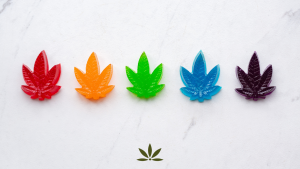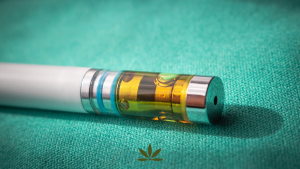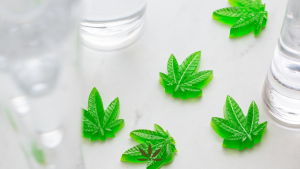Patients Get Massive Benefits from Microdosing Cannabis
You may have heard the phrase “less is more”, and this can certainly apply to cannabis consumption.
As medical marijuana has advanced, the popularity of a practice called “microdosing” has increased. What is microdosing? How is it done? Most importantly, how does the practice of microdosing benefit the medical cannabis patient?
In this article, we’ll discuss the practice of microdosing, and how many medical cannabis patients who have received their medical cannabis certification at Compassionate Clinics of America are integrating this practice into their cannabis regimen.
What is Microdosing?
Microdosing takes the “less is more” approach to cannabis consumption. While many cannabis consumers, and even cannabis patients like to take large doses of edibles, concentrates, oils, tinctures, or flower a few times a day, some prefer to take smaller amounts of cannabis in order to receive its medicinal benefits, but not necessarily experience the intoxicating effects that can come with THC.
Microdosing involves ingesting periodic, small doses of cannabis into your body over an extended period of time. This slower, intentional, and periodic approach invites your body and mind to enjoy the benefits of the cannabinoids present in your cannabis without the strong psychoactive effects of THC.
While many avoid THC altogether because of its psychoactive effect, microdosing involves the use of THC, but in exponentially smaller doses. For this reason, many people are microdosing for anxiety and depression, since using THC in lower amounts doesn’t bring on anxiety as much as high amounts.
More research is emerging on the benefits of microdosing, including one 2020 study that observed that THC in doses as little as 1mg could be effective in relieving pain.

How Microdosing Interacts with the Endocannabinoid System
As we’ve discussed many times in Compassionate Clinics of America’s patient education series, much of cannabis medicine and our understanding of it hinges on the Endocannabinoid System. The Endocannabinoid System, or ECS, is crucial to regulating many of the bodily systems, including those impact our sleep, reproduction, digestion, mood, and more.
Microdosing is about choosing to take small doses several times during an extended period of time versus large doses at more infrequent periods of time. With this approach, your endocannabinoid system is engaged with a steady, and regular, exposure to cannabinoids.
The practice is becoming more popular as an effective way to ingest for those using cannabis for depression, stress, anxiety, or pain, and to help people maintain cognitive clarity throughout the day while they dose their cannabis medicine.
Common Ways Patients are Microdosing their Cannabis
As we know, there are many ways that a medical cannabis patient can choose to consume cannabis medicine. Cannabis is not a one size fits all plant, and it often takes the user trying different methods of consumption, doses, products, and cultivars or strains to find what works best for their medical needs. Here are a few ways some medical cannabis patients are microdosing:
Microdosing by Vaporizing
Using a vaporizer allows you to control your dose through “uses” or the number of “pulls” or “hits” that you take off your device when vaporizing your cannabis. Some even have an indicator such as a light, a vibration, or a noise that will let you know that you’ve had one dose.
If you’re new to vaping, or are trying a new vaporizer product, and aren’t sure what a single “hit” will feel like on the device, try a pulling the vapor into your mouth first before inhaling it into your lungs to see how one hit’s pull feels like.
Once you inhale that pull into your lungs, you’ll be able to notice the effect that it has (be sure to give a few minutes to ensure you’re feeling the full effect). Now that you know what one “pull” feels like on your vaporizer, you can use that as your benchmark to microdose.

As mentioned before, many people will microdose for anxiety and depression, and having a vaporizer on you is a great way to curb anxious or depressed feelings in high-pressure situations.
Oral Ingestion Through Oils & Drops
If you’re using oils, tinctures, drops, or other cannabis extracts, you can also use microdosing to help you gain the benefits of cannabis over an extended period of time.
If your medical cannabis oils or tinctures do not come with it already, some people choose to use a medicine dropper that can be purchased at any pharmacy to control their dose. Once the patient finds their “sweet spot” for their desired microdose, they can continue to use the medicine dropper to ensure precision.
It may take a couple tries to find the right microdose but remember the key to microdosing is “less is more”.
Microdosing Gummies and Other Edibles
When you get edibles from a medical cannabis dispensary after receiving your medical cannabis certification, you’ll be able to purchase edibles that have a precise dose that have been made in a facility where they can guarantee the precision of a dose within a product. For example, many companies are coming out with microdosing gummies or mints that you can find at your local medical cannabis dispensary.
Different people would have different benchmarks on what constitutes a cannabis microdose, but it could range from 0.5mg to 2mg of THC; enough to engage the endocannabinoid system, but not usually enough to make the patient feel “high”.
If you’re making edibles or gummies for microdosing, be sure you know how many milligrams each edible serving contains, and determine your microdose. You may choose to take a quarter or a half-dose at more frequent intervals than if you were to take a whole dose at more infrequent intervals. Again, it’s about finding that “sweet spot” where less is more.

What are the Benefits of Microdosing?
Microdosing is becoming a popular option for those who have their medical cannabis certification for several reasons. Microdosing helps new cannabis users acclimatize to what cannabis feels like before finding their optimal full medical dose. Others embrace microdosing because it helps them to stay clear-headed and “present” with their families, oftentimes relieving stress and the everyday “noise” of life while keeping people from feeling intoxicated. Microdosing is also easier on the wallet for the simple reason that if you’re not consuming more cannabis, you’re not spending more on it.
If you or someone you love are considering a medical cannabis certification but are worried about the effects of THC, consider embracing microdosing as your route to administration. Various brands carry products that make microdosing easy, from small mints, to sublingual strips, to tiny prerolls, and vapes that indicate when you’ve had a dose.
Compassionate Clinics of America provides medical cannabis certifications to residents of Arizona, Arkansas, California, Connecticut, Delaware, Georgia, Illinois, Iowa, Louisiana, Maine, Maryland, Massachusetts, Michigan, Minnesota, Missouri, Montana, Nevada, New Jersey, New York, Ohio, Oklahoma, Pennsylvania, Texas, Utah, Vermont, Virginia, & West Virginia,. Our compassionate healthcare practitioners and patient care team are here for you every step of the way as you navigate medical cannabis certification in your state. Stay tuned to our patient education series and be sure you sign up to our newsletter to receive exclusive offers for dispensary discounts, cultivation equipment coupons, and more.
Frequently Asked Questions
What is microdosing cannabis, and how does it work?
Microdosing is a method of cannabis consumption that adopts a “less is more” approach. Rather than consuming large doses of cannabis at infrequent intervals, microdosing involves taking smaller, more frequent doses over an extended period. This allows users to experience the medicinal benefits of cannabis, including the effects of THC, without the strong psychoactive effects typically associated with it. Microdosing involves using THC but in significantly smaller doses. This approach steadily and regularly exposes the endocannabinoid system to cannabinoids, which regulate bodily functions such as sleep, digestion, and mood.
How can I microdose cannabis, and what are the common methods?
There are several methods patients use to microdose cannabis, depending on their preferences and needs. One popular method is vaporizing, where patients control their dose through the number of “hits” they take off their device. Another method is oral ingestion through oils, tinctures, drops, or other cannabis extracts, where a medicine dropper can be used to measure precise doses. Edibles like gummies are also used for microdosing, with each serving containing a precise amount of cannabis. Companies are coming out with microdosing edibles like gummies or mints, which have specific THC doses. A typical microdose can range from 0.5mg to 2mg of THC.
What are the benefits of microdosing cannabis?
Microdosing cannabis offers several benefits to patients. For one, it’s a way to experience the medicinal benefits of cannabis without the strong psychoactive effects, helping maintain cognitive clarity throughout the day. This practice can benefit those using cannabis for depression, stress, anxiety, or pain. It also helps new cannabis users acclimatize to the effects of cannabis before finding their optimal full medical dose. Microdosing can also be more economical, as consuming less cannabis means spending less on it. For those worried about the effects of THC, microdosing can be an effective route to administration. Various brands carry products that facilitate microdosing, such as small mints, sublingual strips, tiny prerolls, and vapes that indicate when a dose has been consumed.























